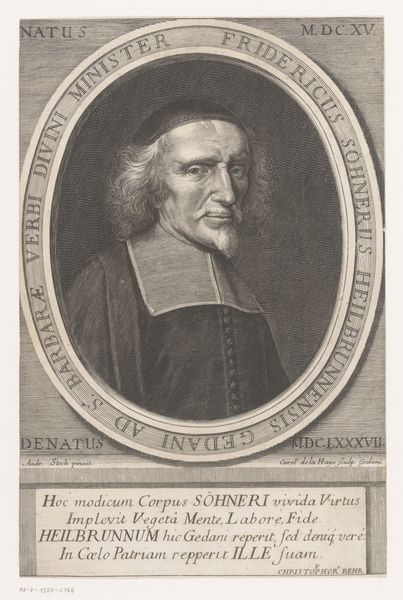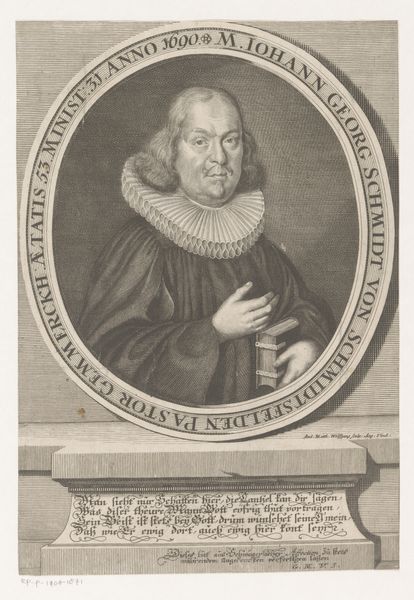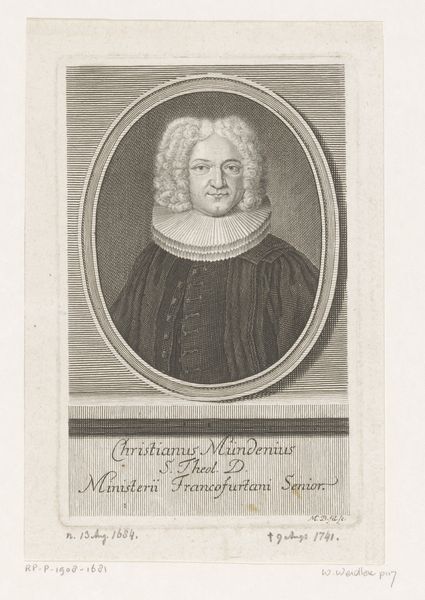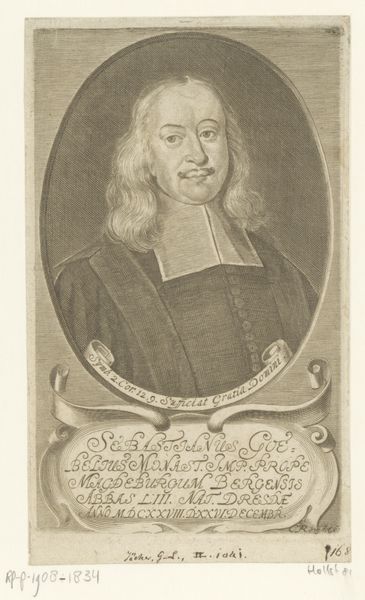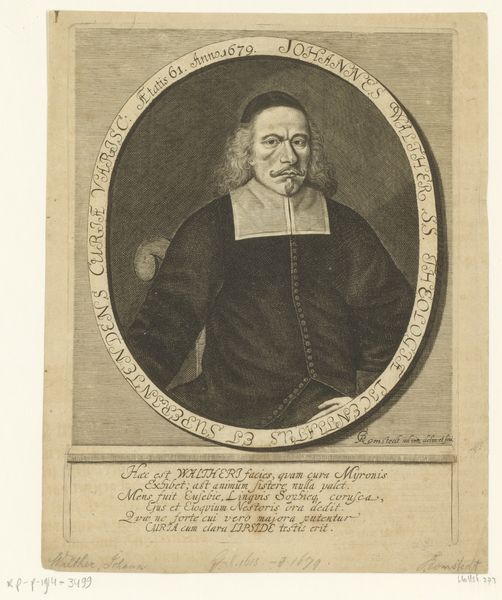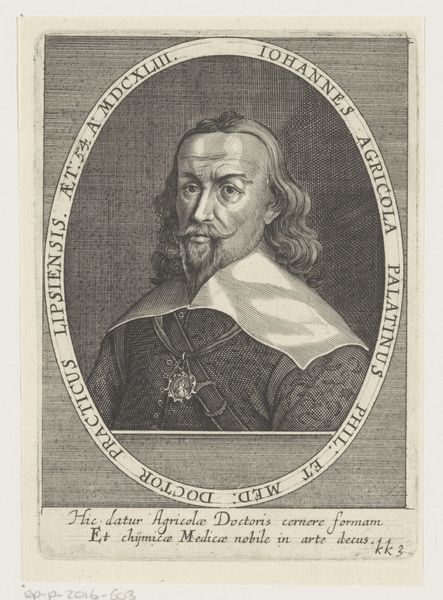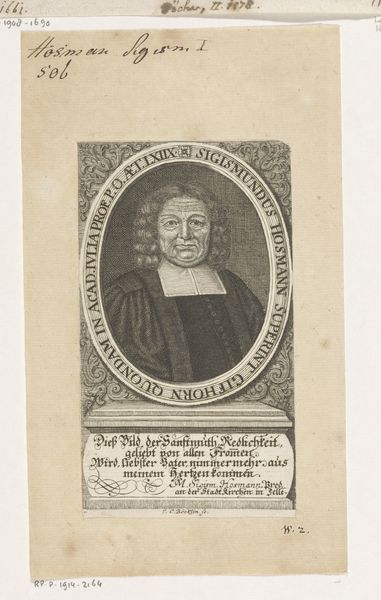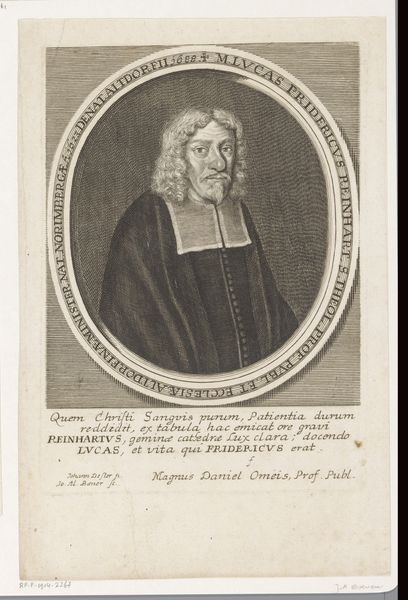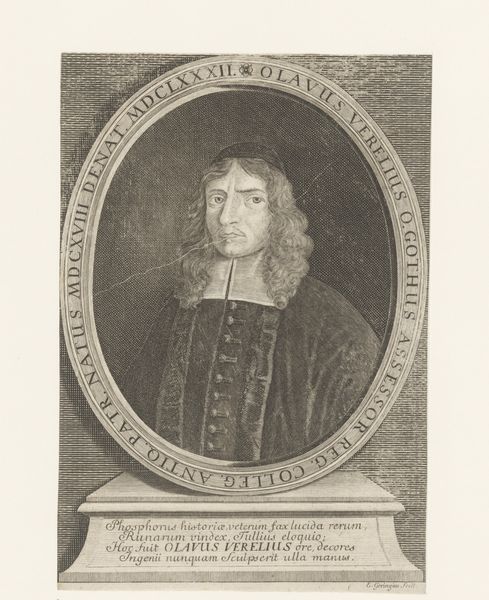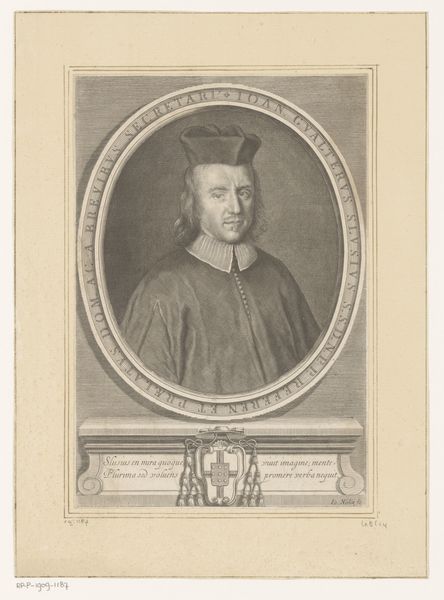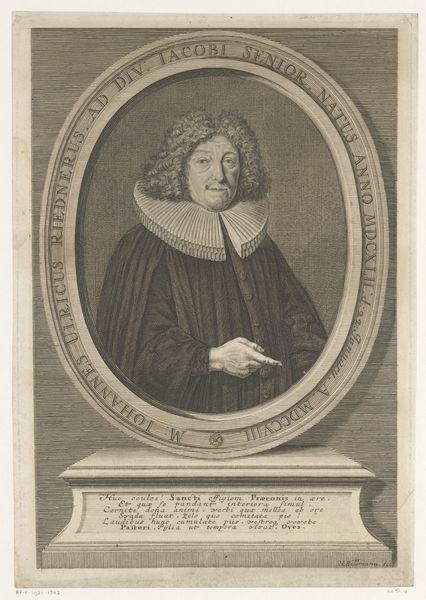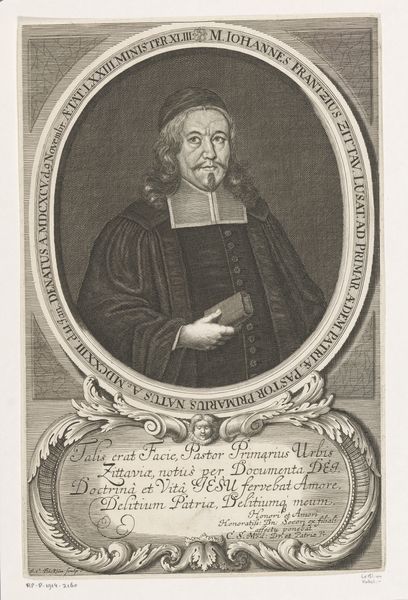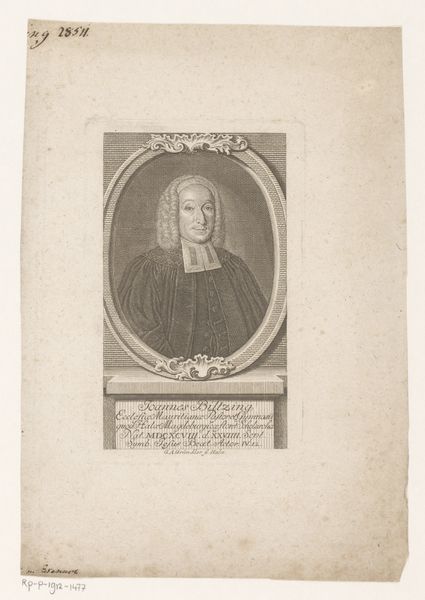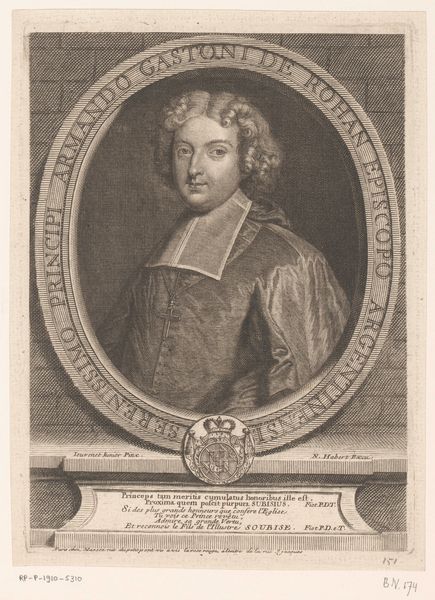
print, engraving
#
portrait
#
baroque
# print
#
old engraving style
#
figuration
#
line
#
history-painting
#
engraving
Dimensions: height 144 mm, width 107 mm
Copyright: Rijks Museum: Open Domain
Editor: Here we have "Portret van dichter Bernardo Morando," a print by Giacomo Piccini, made after 1627. The tight lines and details are really striking for this old engraving. What can we say about this portrait from a historical viewpoint? Curator: Well, let’s look at the *how* and *why* it was made. Engravings like this served a vital function: the reproduction and dissemination of images in an age before photography. So this portrait, made *after* Morando's death, wasn't just art. It was a commodity, a representation circulating within a specific economic and social system. Editor: So the value isn’t just in the likeness, but in its reproducibility? Curator: Precisely. Think about the labour involved: the engraver's skill in translating an image into a matrix, the printing process itself, the distribution networks that carried it across geographical boundaries. Consider who commissioned it, who bought it, and what purpose it served within their lives. Editor: It's interesting to think of it less as a singular piece of art and more as a mass-produced object, connecting with ideas of consumption. Does the print material itself signify anything beyond just being a substrate for the image? Curator: The paper stock itself, even the ink, speaks volumes about the availability and cost of materials at the time. Was it cheap, readily available paper, suggesting a mass-produced image for wide distribution? Or a finer, more expensive stock implying a more elite market? Each aspect speaks to a complex web of production, circulation, and consumption. Editor: So by looking at the materials and the process of creation, we learn more about its role in society than just focusing on Morando as an individual. Curator: Absolutely. It shifts our focus from the individual genius to the collective labour and material conditions that enabled the image to exist and circulate. Editor: That's a really different way of considering historical portraiture. Thank you for sharing.
Comments
No comments
Be the first to comment and join the conversation on the ultimate creative platform.
